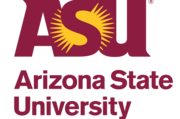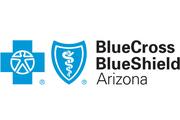
The recent study from CBRE Group Inc. showing that Phoenix was the highest in the nation for growth in life sciences jobs is phenomenal news for Arizona’s economy — and it didn’t happen by accident.
The life sciences industry includes areas such as medicine, bioscience, biotechnology or biomedical informatics. A concerted effort by Arizona State University and community leaders to grow and expand life sciences research, generate new spinout companies, attract new companies and produce more graduates trained in the life sciences areas has been underway for more than two decades.
In 2000, a 20-year, six-tenths of a cent sales tax increase, authorized by passage of Proposition 301, created the Technology and Research Initiative Fund (TRIF). This substantial investment in higher education has provided essential support and expansion of research infrastructure at ASU.
ASU made the strategic decision to invest the bulk of its TRIF allocation in bioscience and related technology areas through the formation of the Biodesign Institute. In 2002, the university launched the Biodesign Institute as a flagship initiative to advance scientific research and development capabilities.
“We knew we needed a new approach to maximize scientific outcomes —we needed to fuse disciplines with hundreds of researchers from life sciences and physical sciences working together to come up with new solutions to global challenges,” said ASU President Michael M. Crow. “The creation of the Biodesign Institute was ASU’s first attempt at transdisciplinary research, where scientists from different disciplines work together and also work closely with industry to turn discoveries into products and clinical practices. The ripple effects of that effort have been remarkable.”
The Biodesign Institute now comprises three buildings on the Tempe campus housing more than 1,300 faculty, staff and students working to improve human health and the health and security of our planet. As examples, research teams from the Biodesign Institute developed the world’s first plant-based Zika vaccine and rose to a challenge posed by the U.S. Department of Defense to make at least 1,000 doses of therapeutic antibodies resistant to any unknown pathogen in a week. The Biodesign Institute is also responsible for developing the first saliva-based COVID-19 test in the Southwest, providing testing to hundreds of thousands of individuals across the state.
The university’s contributions to the growth of Phoenix’s life sciences industry is further evidenced by the expansion of the downtown Phoenix Biomedical Campus (PBC) and The Mayo Clinic and Arizona State University Alliance for Health Care, now headquartered at the Health Futures Center adjacent to the Mayo Clinic in north Phoenix.
Nearly a dozen different ASU colleges, labs and research centers have a presence on the PBC across three different buildings, the most recent being 850 PBC Innovation Center by Wexford Science and Technology, designed to maximize collaboration and amplify research and commercialization. Over time, ASU expects to develop an additional 2 million square feet on the campus, much of which will be occupied by private businesses seeking to be situated with a major research university.
“ASU and other researchers at the Phoenix Biomedical Campus have turned discoveries into companies,” said Rick Naimark, associate vice president for program development planning at ASU. “These spin-offs naturally want to be located near the home lab of the researchers and near one another. By creating both the core research resources and an entrepreneurial ecosystem at the PBC, we have launched a robust knowledge community in the middle of a thriving downtown, where any health care or bioscience company considering Arizona would want to locate.”
In north Phoenix, Mayo Clinic is developing a biotech corridor called Discovery Oasis. ASU is the first collaborator in this space through the Health Futures Center and has committed to further partnering with Mayo Clinic on this effort. ASU and Mayo Clinic will partner on research and providing a world-class talent pipeline to feed the growing health care technology sector in Arizona. ASU’s expected buildout at Discovery Oasis is 1.5 million square feet.
To support the demand for a life sciences workforce, ASU currently offers 31 life sciences degree programs with options on campus and online. Enrollment in those programs has skyrocketed over the last decade: in fall 2012, about 5,000 students were enrolled in life sciences degree programs. Today, enrollment is approaching 11,000 students. Similarly, the number of graduates from these disciplines has jumped tremendously — from approximately 900 in 2012 to nearly 12,000 today.
ASU’s research in the life sciences space has also led to 79 spinout companies over the last decade through ASU’s specialized technology-transfer group Skysong Innovations (SI). Companies like OncoMyx Therapeutics, which is developing new immunotherapies to treat cancers; Calviri, a company that is conducting the largest canine preventative cancer vaccine trial in history; and iNanoBio, which is developing advanced technologies for genome sequencing and personalized health care. These three Phoenix-based companies alone have brought in over $110 million in funding to support their work and have created dozens of new jobs, according to data from Skysong Innovations. Overall, startups launched from SI based in ASU research have cumulatively raised over $1 billion in venture capital and other external investments, which has helped fuel local economic growth and supported thousands of jobs.
“This is one of the benefits of having a major public research university in the greater Phoenix area,” said Crow. “We are focused on research that has a real-world impact, research that leads to life-saving innovations, supports economic growth and helps move society forward.”
ASU is committed to access, excellence and impact. ASU measures itself by those it includes, not by those it excludes. ASU pursues research that contributes to the public good, and ASU assumes major responsibility for the economic, social and cultural vitality of the communities that surround it. Learn more at asu.edu.


